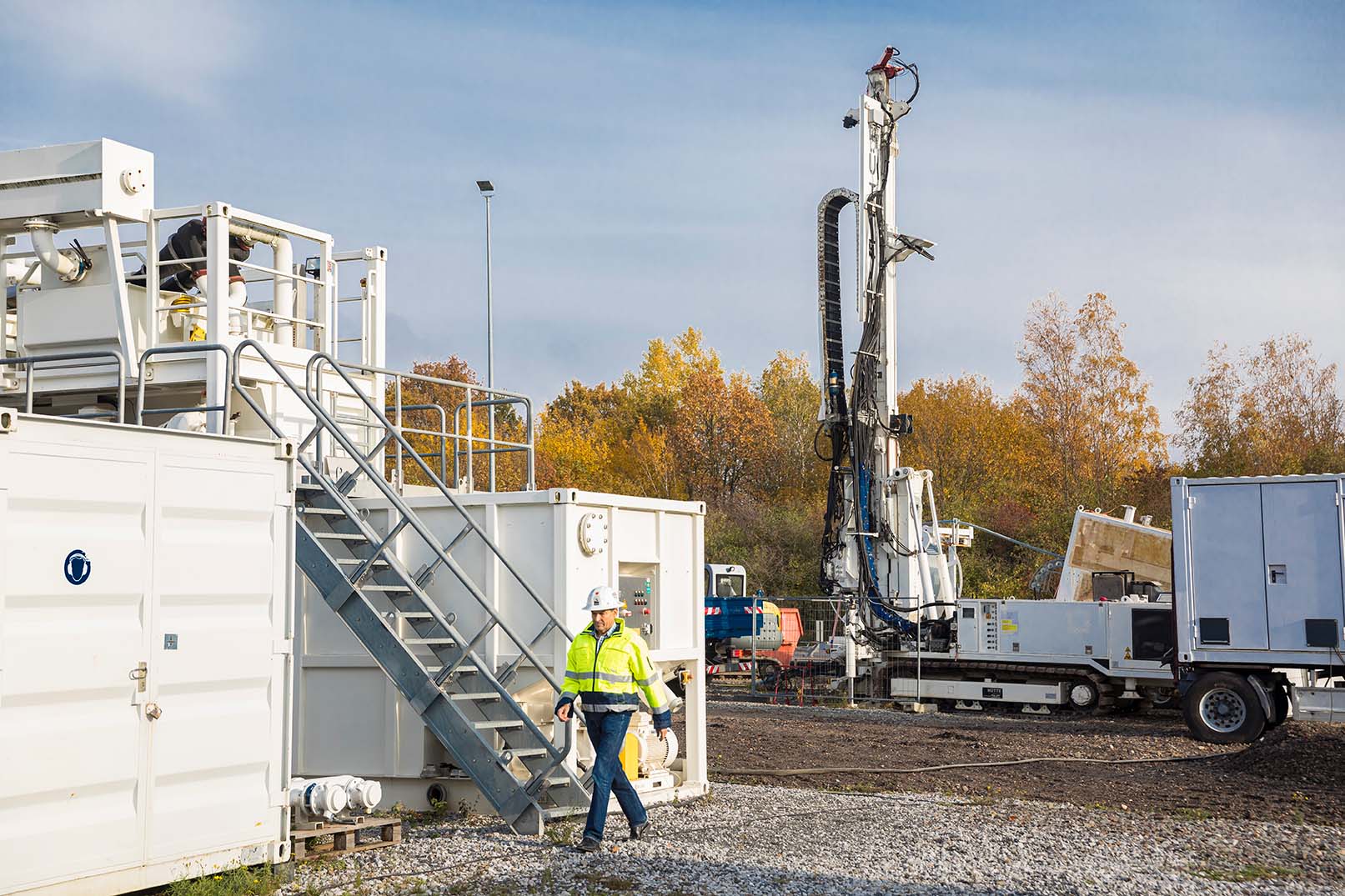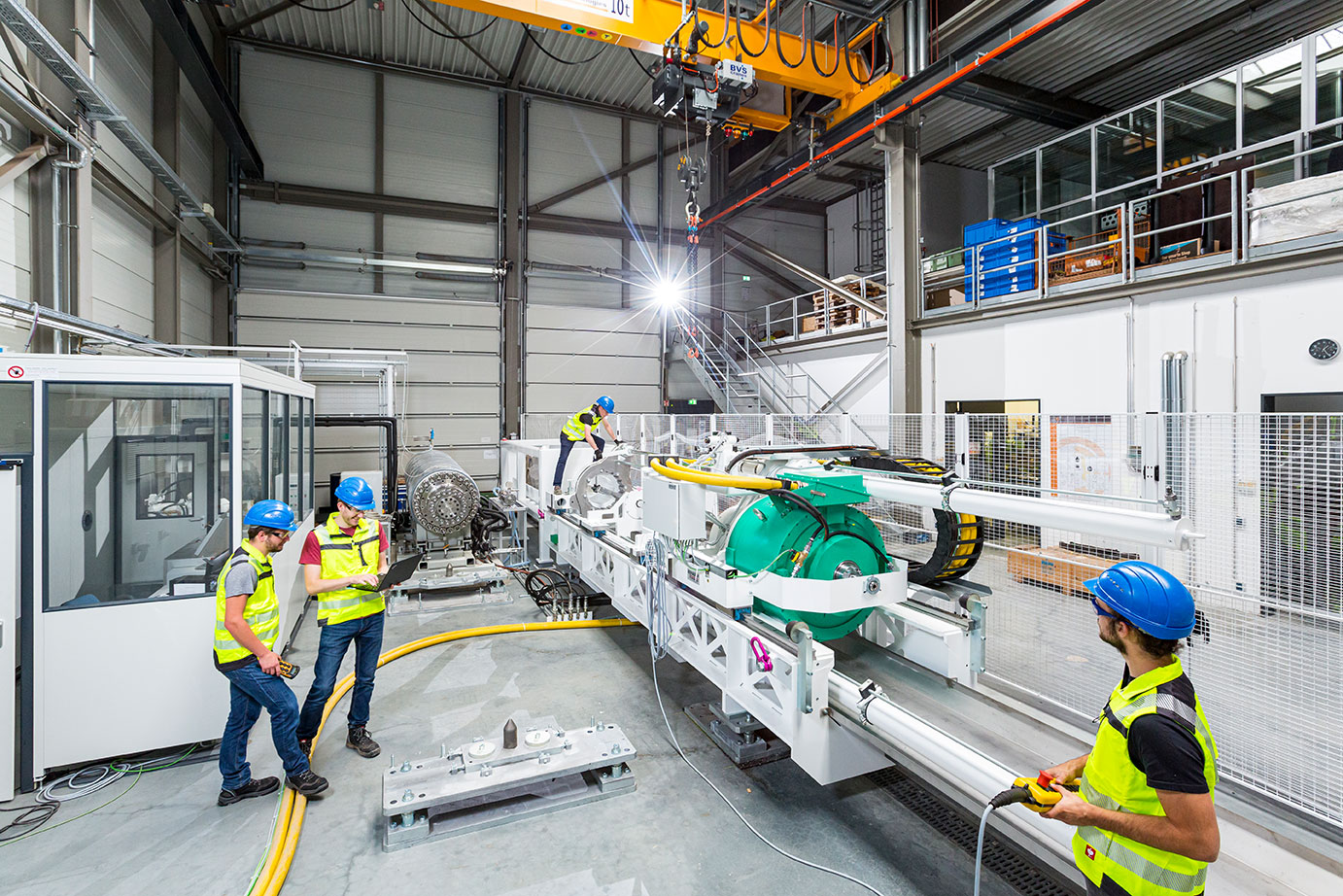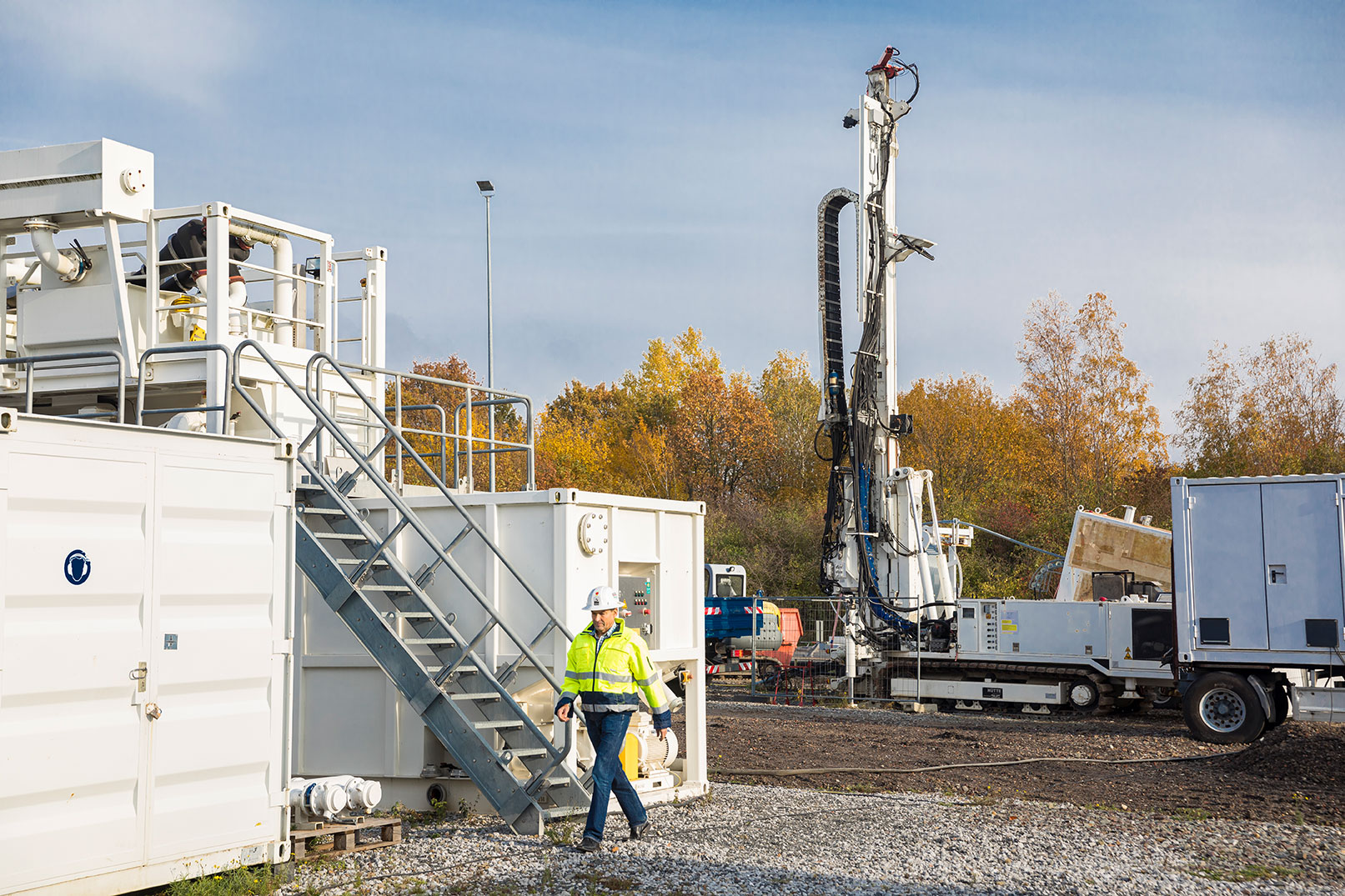Optimising technology for geothermal extraction
The GeoDrill project aims to reduce drilling costs of geothermal plants through down-the-hole (DTH) hammer technology, improved drilling monitoring through low-cost and robust 3D-printed sensors, and increased component lifetime through advanced materials and coatings. The project coordinator is TWI Limited, based in the UK. Fraunhofer IEG is overseeing the technical coordination and is involved in two work packages. A novel percussion mechanism for the hammer drill is being developed, integrated and tested in various scenarios at the Bochum site. Finally, a test well with the complete system will be drilled at the Fraunhofer IEG drilling site. In total, the project consortium includes 12 project partners from different European countries and the project duration is 52 months (since April 1, 2019) with a total budget of 4.9 million euros.




